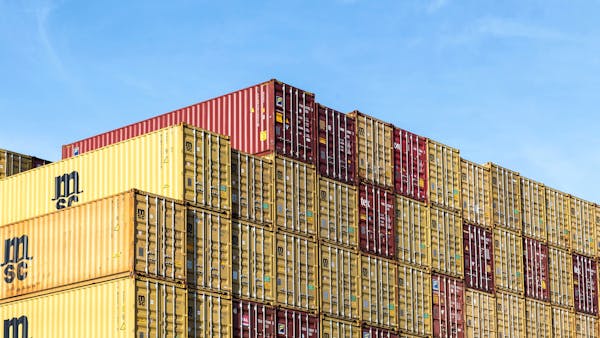Shipping Bluetooth Headphones from Guangzhou/Shenzhen to Felixstowe/London Port (CIF) via 20FT/40FT FCL and LCL Ocean Freight
Shipping Options: 20FT/40FT FCL and LCL
1. Full Container Load (FCL) Shipping: For larger shipments, Full Container Load (FCL) is the preferred method. A 20FT or 40FT container is typically used to ship Bluetooth headphones. FCL shipping means that your shipment occupies the entire container, offering benefits like cost-effectiveness for large volumes, fewer handling risks, and a faster delivery time.
- 20FT Container: A 20-foot container is ideal for shipments that don’t require large amounts of space. It can carry up to approximately 10-12 standard pallets or 25-30 cubic meters of goods.
- 40FT Container: For bulkier or heavier shipments, a 40-foot container is more suitable. It can carry about 20-24 pallets or 55-60 cubic meters of goods.
2. Less than Container Load (LCL) Shipping: For smaller shipments, Less than Container Load (LCL) is a more economical option. In LCL, your goods share container space with other consignments. While this can lower costs, it may increase transit time slightly due to the additional handling and consolidation processes.
- LCL Shipping to Felixstowe or London: LCL shipments typically take about 24 days for ocean transit from Guangzhou or Shenzhen to Felixstowe or London. The goods are consolidated at the port of departure and then deconsolidated at the destination port before delivery.
CIF Shipping Terms:
For both FCL and LCL shipments, the term CIF (Cost, Insurance, and Freight) is commonly used. This means that the seller (in China) is responsible for the cost of goods, insurance, and freight to the destination port (Felixstowe or London). Once the goods reach the UK port, the buyer is responsible for customs clearance, port charges, and further transportation to their final destination.

Ocean Freight Transit Time:
The ocean freight journey typically takes about 24 days for the shipment from Guangzhou/Shenzhen to the UK. The actual time may vary slightly depending on factors such as weather, port congestion, or customs processing, but it generally remains within this timeframe for direct ocean routes.
Packaging of Bluetooth Headphones:
Proper packaging is critical when shipping electronics to ensure they arrive at their destination without damage. Here’s how Bluetooth headphones are typically packaged for international ocean shipping:
1. Individual Packaging: Each Bluetooth headset is usually packed in a protective cardboard box or plastic blister pack. These individual packages are designed to shield the product from dust, moisture, and minor impacts during transport.
2. Bulk Packaging: For FCL shipments, the individual headphone boxes are packed into larger cardboard boxes. These boxes are filled with foam or bubble wrap to prevent the products from shifting or colliding with each other during transit. The boxes are then secured onto pallets, often using stretch film to ensure stability.
For LCL shipments, the goods may be consolidated into larger shipping boxes or crates depending on the volume. These are carefully arranged to optimize space and minimize handling during the consolidation process.
3. Palletization: For both FCL and LCL shipments, goods are often loaded onto wooden or plastic pallets. This helps in securing the packages, making them easier to handle during loading and unloading. Palletized goods also reduce the risk of damage during the journey. Typically, the pallet is shrink-wrapped to protect the boxes from moisture and other environmental factors during transit.
4. Protective Materials: To ensure the safety of the Bluetooth headphones, especially when shipping by ocean freight where vibrations and rough handling are common, extra padding is added. Foam inserts, bubble wrap, or air pillows are commonly used inside the boxes, and the entire pallet is often wrapped with stretch film.
5. Markings and Labels: Each shipment must have the proper markings and labels. These include product details, handling instructions (e.g., “Fragile” or “This Side Up”), and the shipping documentation. Customs paperwork must also accompany the goods to ensure smooth clearance at the destination.



